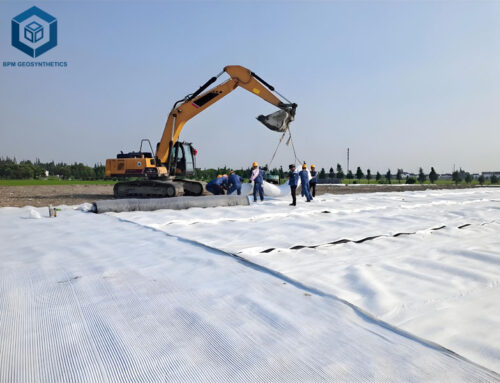Geotextiles are a crucial component in modern road construction projects, playing a multifaceted role in ensuring the stability, longevity, and performance of transportation infrastructure. BPM Geotextile, made from durable polymeric materials, serve as an integral civil engineering solution with functionalities that range from separation and reinforcement to filtration, drainage, and protection. As a leading geotextile manufacturer, BPM has always been adhering to the attitude of satisfying customers and reassuring customers, and makes every product with heart. In this discussion, we will delve into the various aspects of geotextiles, exploring their definitions, types, functions, installation methods, and the numerous benefits they bring to the construction and maintenance of roadways.
1. What Is Geotextile In Road Construction?
Geotextile is a permeable fabric that is used to separate, filter, or reinforce soil in civil engineering projects such as road construction. It is made of synthetic fibers like polypropylene or polyester and is designed to be durable and resistant to UV light, chemicals, and microbial activity.
In road construction, geotextile is commonly used for the following purposes:
- Separation: Geotextile can be used to separate different layers of materials in a road structure, such as separating the subgrade from the base course or separating the base course from the subbase. This helps prevent intermixing of the materials and ensures proper functioning of each layer.
- Reinforcement: Geotextile can also be used to reinforce weak or unstable soils, providing additional strength and stability to the road structure. This is particularly useful in areas with soft or expansive soils, where the geotextile can help distribute loads more evenly and reduce the risk of settlement or cracking.
- Filtration: Geotextile can be used as a filter to prevent fine particles from migrating through coarser materials, such as gravel or crushed stone. This helps maintain the integrity of the road structure by preventing the loss of fines and ensuring proper drainage.
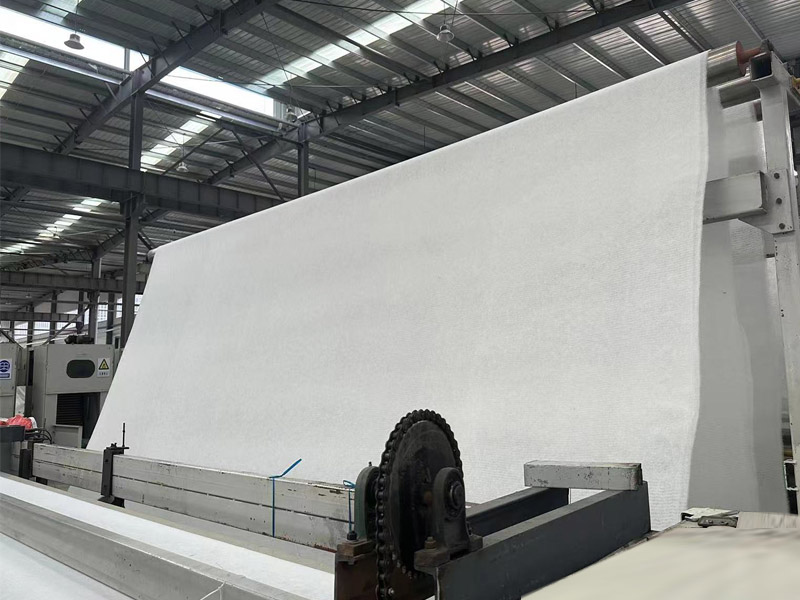
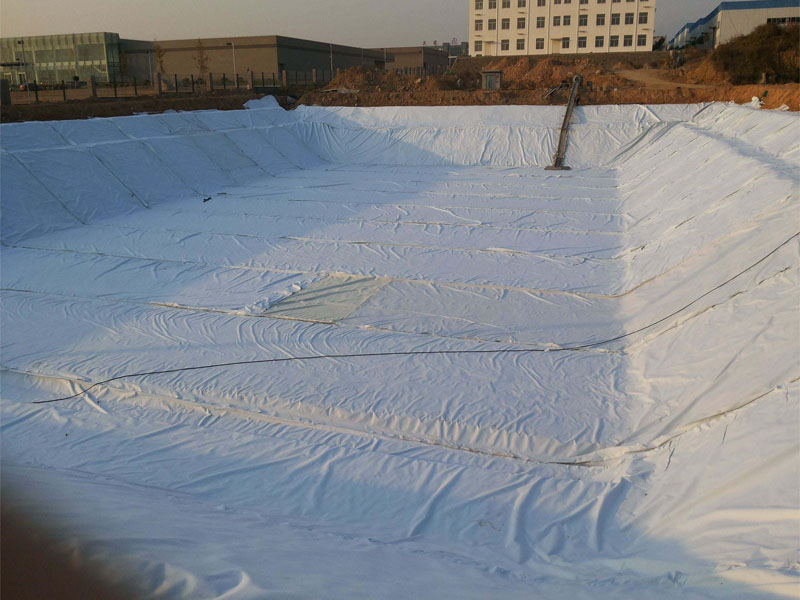
2. What Are Types And Functions Of Geotextiles In Road Construction?
2.1 Two main types of geotextiles used in road construction:
- Woven geotextiles are made by weaving together synthetic fibers, such as polypropylene or polyester, to create a strong and durable fabric. These geotextiles are often used for separation and filtration purposes in road construction.
- Non-woven geotextiles, on the other hand, are made by bonding synthetic fibers together using heat or chemicals. These geotextiles are often used for reinforcement purposes in road construction.
2.2 Functions of geotextiles in road construction include:
2.21 Separation:
Geotextiles are used to separate different layers of materials in a road structure. This prevents intermixing of the materials and ensures that each layer can perform its intended function. For example, geotextiles can be used to separate the subgrade from the base course or the base course from the subbase.
2.22 Reinforcement:
Geotextiles can reinforce weak or unstable soils, providing additional strength and stability to the road structure. This is especially useful in areas with soft or expansive soils, where the geotextile helps distribute loads more evenly and reduces the risk of settlement or cracking.
2.23 Filtration:
Geotextiles act as filters, preventing fine particles from migrating through coarser materials such as gravel or crushed stone. This helps maintain the integrity of the road structure by preventing the loss of fines and ensuring proper drainage.
2.24 Drainage:
Geotextiles can also promote drainage by allowing water to flow through them while preventing the migration of fine particles. This is particularly important in areas with high water tables or frequent rainfall, where proper drainage is essential to prevent waterlogging and associated damage to the road structure.
2.25 Cushioning:
In some cases, geotextiles can provide cushioning between layers of material, helping to absorb shock and reduce stress on the underlying layers.
2.26 Protection:
Geotextiles can protect underlying soils from mechanical damage during construction, such as from heavy equipment traffic or foot traffic.
2.27 Tamping:
In some applications, geotextiles can be used to help compact or tamp down soil layers, improving their density and load-bearing capacity.
2.28 Mitigation of reflective cracking:
Geotextiles can help mitigate reflective cracking in asphalt overlays by reducing stresses caused by differential movements between the old pavement and the new overlay.
2.29 Erosion control:
Geotextiles can be used to control erosion along slopes and embankments adjacent to roadways, helping to maintain the integrity of the road structure and surrounding landscape.
3. How To Install Geotextile In Road Construction?
The installation of geotextile in road construction involves several steps and considerations to ensure its proper function and longevity. Here’s a general process on how to install geotextile in road construction:
3.1 Site Preparation:
The area where the geotextile will be installed should be cleared of any debris, vegetation, or obstructions. The surface should be graded to the desired slope and compacted to create a stable base for the geotextile.
3.2 Inspection and Testing:
Before installation, the geotextile should be inspected to ensure it meets the specified quality standards. It should be checked for any damage or defects that could affect its performance.
3.3 Laying Out the Geotextile:
The geotextile roll should be laid out on the prepared subgrade or subbase, starting at one end of the road section and unrolling it towards the other end. Care should be taken to avoid stretching or tearing the geotextile during this process.
3.4 Overlapping and Seaming:
If multiple rolls of geotextile are used, they should overlap by a minimum of 3-6 feet (0.9-1.8 meters) to ensure continuity and prevent any gaps. The overlapped sections should be seamed together using sewing, taping, or gluing methods recommended by the manufacturer.
3.5 Anchoring the Geotextile:
The geotextile should be anchored to the subgrade or subbase using U-shaped stakes, sandbags, or other anchoring devices. The anchors should be placed along the edges and at intervals throughout the length of the geotextile to prevent it from shifting during subsequent construction activities.
3.6 Protecting the Geotextile:
After installation, the geotextile should be protected from mechanical damage during subsequent construction activities. This can be done by covering it with a layer of sand or other protective material.
3.7 Construction of Road Layers:
Once the geotextile is properly installed and anchored, the subsequent layers of the road structure (such as subbase, base course, and pavement layers) can be constructed over it.
3.8 Quality Control and Inspection:
Throughout the installation process, regular inspections and quality control measures should be conducted to ensure that the geotextile is properly installed and performing its intended functions.
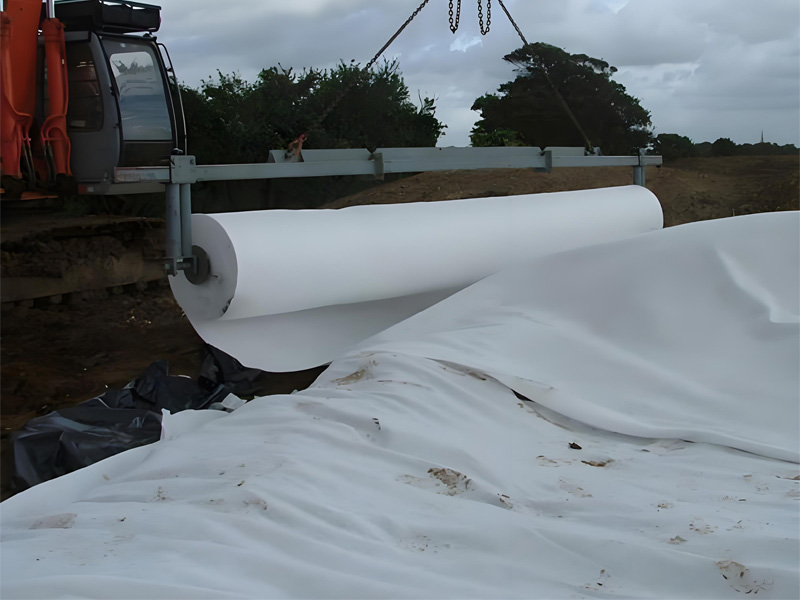
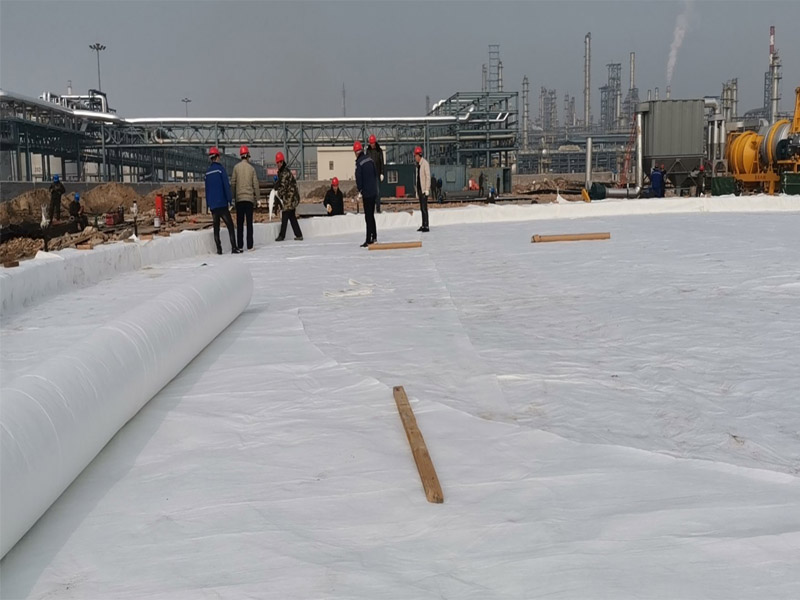
4. How To Maintain Geotextile In Road Construction?
Maintaining geotextile in road construction is crucial to ensure its long-term performance and durability. Here are some tips on how to maintain geotextile in road construction:
4.1 Regular Inspections
Periodic inspections should be conducted to check the condition of the geotextile and identify any signs of damage or deterioration. These inspections can help detect issues early on and allow for prompt corrective action.
4.2 Proper Drainage
Ensure that the road has proper drainage to prevent water from accumulating on the geotextile. Water accumulation can lead to increased pressure on the geotextile, which can cause it to shift or degrade over time.
4.3 Protection from Mechanical Damage
Protect the geotextile from mechanical damage caused by heavy equipment, vehicles, or foot traffic. This can be done by covering the geotextile with a protective layer of soil or other materials.
4.4 Avoid Chemical Spills
Chemicals such as oil, fuel, or solvents can damage the geotextile if spilled on it. Prompt cleanup of any chemical spills is essential to prevent damage to the geotextile.
4.5 Control of Vegetation Growth
Vegetation growth on or near the geotextile should be controlled to prevent roots. Regular mowing, trimming, or use of herbicides can help control vegetation growth.
4.6 Repair of Damaged Areas
If any damage or defects are found during inspections, prompt repairs should be made to prevent further deterioration. This may involve patching or replacing damaged sections of the geotextile.
4.7 Compaction of Overlying Layers
Proper compaction of the layers overlying the geotextile is essential to ensure.
5. Summary
Geotextile in road construction is a synthetic fabric material used to provide essential functions such as separation, reinforcement, filtration, and drainage. It helps prevent intermixing of different layers, reinforces weak soils, allows fine particles to be filtered out while allowing water to flow through, and maintains the integrity of the road structure by providing cushioning, protection, and erosion control. Proper installation and maintenance of geotextile are crucial to ensure its long-term performance and durability in road construction projects.
If you have any further questions, please feel free to contact us.

